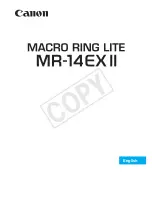
Technical Documentation
opti-check
v2.8.2-K11
266/332
ipf electronic GmbH
Lüdenscheid, Germany
15.3.1.6 Composite data type: List
This composite data type is a list of values of arbitrary type.
Available format: Analogue used data type
Represented as: Number <separator> <1. value corresponding data type> <separator><2. Value
corresponding data type><separator>…<separator><last value corresponding data type>
Example: (data type integer):
Values: (123,234,245), Separator: „;"
Format
Text representation Transferred value (process interface)
ASCII hex
„03;7B;EA;F5"
\30 \33 \3B \37 \42 \3B \45 \41 \3B \46 \35
ASCII dec
„3;123;234;245"
\33 \3B \31 \32 \33 \3B \32 \33 \34 \3B \32 \34 \35
Binary
cannot be
represented
\00 \00 \00 \03 \3B \00 \00 \00 \7B \3B \00 \00 \00
\EA \3B \00 \00 \00 \F5
15.3.2 Numeric values in commands
Various commands require numeric values as parameters or return numeric values. For example, when
switching the current job, the corresponding job number must be specified and the new job number is
returned in the status datagram.
NOTE
Numerals are always entered as ASCII Hex information in the command data. Observe
that the Hex values must be specified in upper case letters!
For example, the Hex numbers below result from the following values:
Value
2 byte ASCII hex
4 byte ASCII hex
1
01
0001
10
0A
000A
100
64
0064
255
FF
00FF
1000
-
03E8
















































